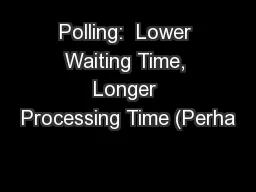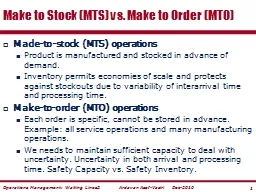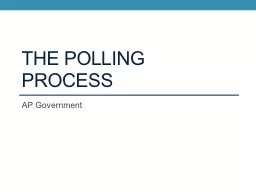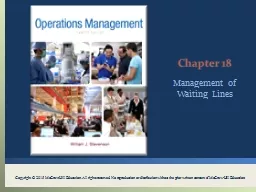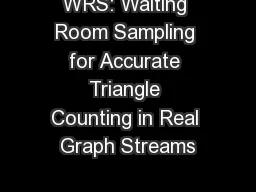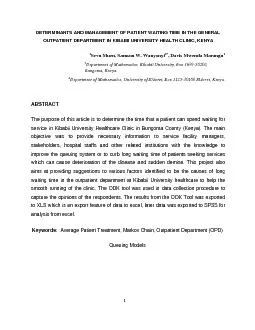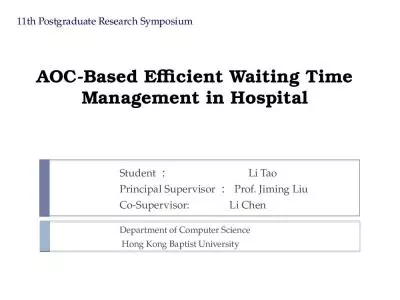PPT-Polling: Lower Waiting Time, Longer Processing Time (Perha
Author : tatiana-dople | Published Date : 2016-07-28
Waiting Lines Now Lets Look at the Rest of the System The Littles Law Applies Everywhere Flow time T Ti Tp Inventory I
Presentation Embed Code
Download Presentation
Download Presentation The PPT/PDF document "Polling: Lower Waiting Time, Longer Pro..." is the property of its rightful owner. Permission is granted to download and print the materials on this website for personal, non-commercial use only, and to display it on your personal computer provided you do not modify the materials and that you retain all copyright notices contained in the materials. By downloading content from our website, you accept the terms of this agreement.
Polling: Lower Waiting Time, Longer Processing Time (Perha: Transcript
Download Rules Of Document
"Polling: Lower Waiting Time, Longer Processing Time (Perha"The content belongs to its owner. You may download and print it for personal use, without modification, and keep all copyright notices. By downloading, you agree to these terms.
Related Documents

